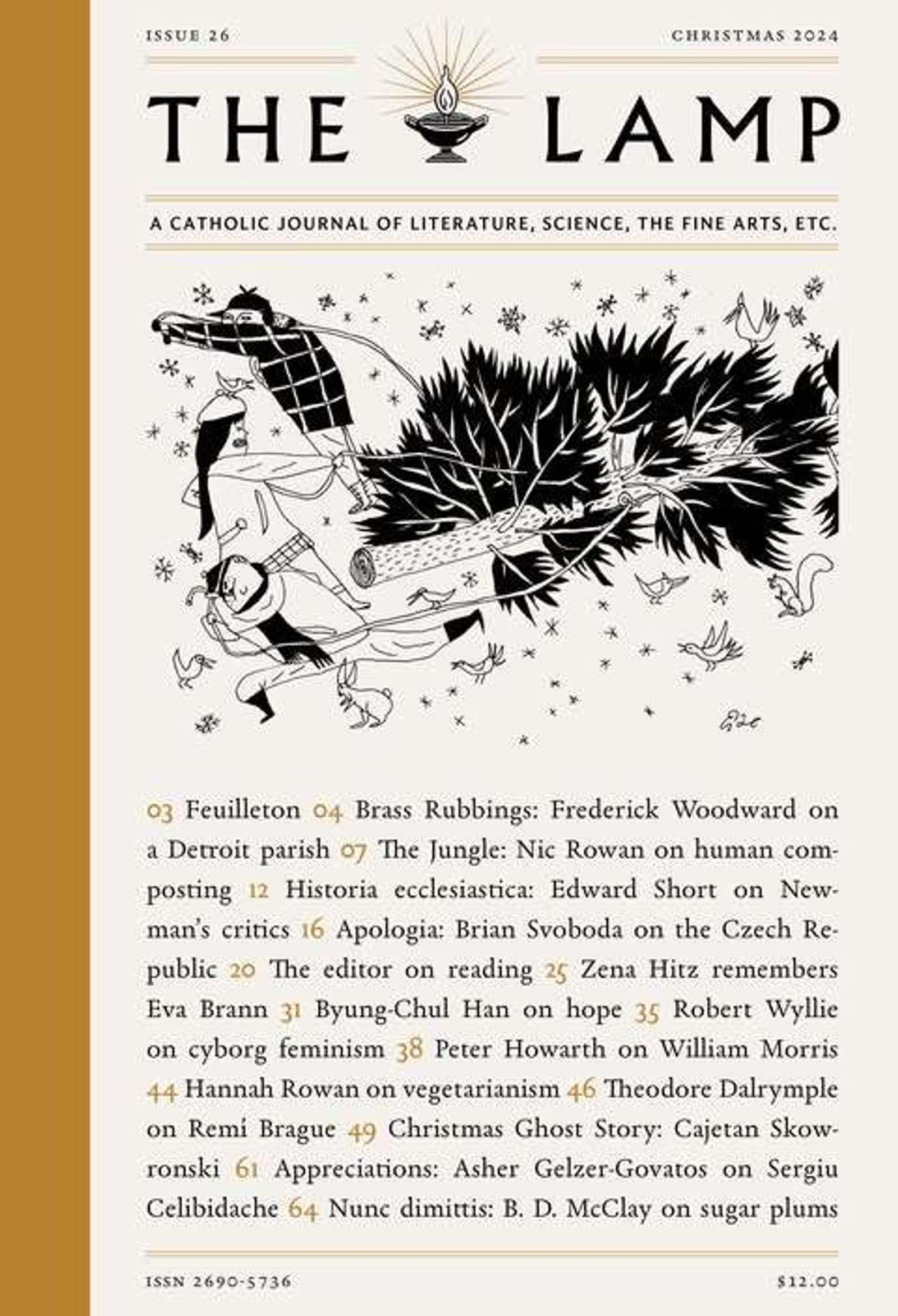语文学与世界文学[1]
作者 | 埃里希·奥尔巴赫(Erich Auerbach)
译者 | 靳成诚(比较所博士生)
Nonnulla pars inventionis est nosse quid quaeras.[2]
一
如果我们依然像歌德所做的那样,将“世界文学”(Weltliteratur)这个词同时指向过去和未来的话,那么现在是时候追问这个词到底还能有什么意义了。作为世界文学的场域,我们的星球并不仅仅意味着一般意义上的普遍与人性;而且,地球将人性看作是它的成员之间富有成果的交流的产物。世界文学有一个福祸相依的预设(felix culpa):即人类按照不同的文化分成许多支系。然而,今天人类的生活却在变得日益标准化。强制推行一致性的做法最初起源于欧洲,如今依然在进行中,其结果便是所有独立的传统的根基都遭到了破坏。不可否认,民族意志比以往任何时代都要强烈和喧嚣,但是就每一个民族而言,其所推进的现代生活的标准和方式却全然是一致的;所以对不带偏见的旁观者来说,民族存在的内在基础显然正在朽烂。欧洲诸文化一直以来都得益于彼此之间富有成效的相互联系,并且也一直从对自身价值的自觉意识中获得支持,这些文化因此依然保持了它们的独立性。尽管如此,即使在这些文化中间,抹平差异性的进程仍然在以前所未有的速度进行着。总之,举目所及,标准化都处在统治地位。所有的人类活动都正在被归化到欧洲-美国以及俄国-布尔什维克这两个模式中,当它们和构成伊斯兰、印度和中国传统基础的基本模式相对照的时候,不管在我们看来它们是多么伟大,这两个模式之间的差异相对来说其实都是极其微小的。如果人类能够禁受得住如此有力而又迅速的归化进程——虽然为此的精神准备一直很薄弱——那么人们将不得不使自己适应在一个标准化的世界里的生存,适应一种单一的文学文化、有限的几种文学语言乃至于一种单一的文学语言。那么随之而来的是,世界文学这个观念在被实现的同时也就被摧毁了。
如果我估计得没错的话,就其强制性和对群众运动的依赖性而言,目前的这个局面是歌德所没有预料到的。因为歌德很乐观地回避思考那些被后来的历史证明是无可避免的事情。他偶尔也承认我们的世界中那些令人沮丧的趋势,然而那时还是没有人能够猜到这样一个令人厌恶的可能性会被实现得如此彻底和出人意料。歌德的时代虽然的确很短暂,但是我们中间的老一辈人却真的经历了这个时代的逝去。自从欧洲的民族文学赢得相对于拉丁文明的优越性并从中获得自我意识以来,已经过去了将近五百年;而我们历史主义(historicism)意识的苏醒至今不过勉强有两百年的时间,而正是这种意识使得我们有可能形成“世界文学”的概念。一百二十年前逝世的歌德,通过他自己的榜样和他的作品,对历史主义的发展和由之衍生出的语文学研究做出了决定性的贡献。然而,在我们这个时代,我们见证了一个历史主义的意识于其没有多少实际意义的世界正在崛起。
尽管歌德式人文主义的时代确实如白驹过隙一般,但是它却不仅在当时产生了重要的影响,而且也开启了许多持续至今,并仍在发展分化中的事业。到歌德晚年的时候,可供研究的世界文学的数量已经比他出生时要多得多;然而,和我们今天能够见到的世界文学相比,那个数量依然很小。我们关于世界文学的知识得感谢历史主义的人文研究所赋予那个时代的冲动;那种人文研究所关心的不仅仅是材料发掘和研究方法的发展,更是对材料与研究方法的洞察和评估,只有这样,一种人类的内史(inner history)——统一在其多样性之下的人类概念正是因此被创造的——才能付诸笔端。自从维柯和赫尔德[3]以来,这种人文研究一直是语文学的真正目的:正是因为这个目的,语文学才成为了人文学科中具有主导性的分支。语文学在其身后描画出了艺术、宗教、法律以及政治等学科的历史,并将自己分别编入其中,织成某些确定的目标和被普遍达成的秩序的观念。由此在学术和综合研究上所取得的成就,对当下的读者来说已经毋庸赘言了。
在环境和前景都完全改变的情况下,这样一种活动继续下去还有意义吗?我们没有必要过分强调这种活动确实在继续,并且还在广泛传播这个简单的事实。因为一种习惯或制度一旦形成总会持续很长时间,特别是当那些认识到了生命的境遇发生了根本性变化的人们常常既没有准备好又无法将他们的认识转化成实际行动的时候。从少数具有突出才能和原创性的年轻人对语文学和历史主义研究热情的投入中我们仍然能够看到希望。我们可以希冀这些年轻人对这份工作的天分不会辜负他们,并且这项研究也依然和当下与未来有关,这样想无疑是令人鼓舞的。
在科学的组织和指导下对现实的研究充斥了并且统治了我们的生活;如果我们想要为其命名的话,它就是我们的“神话”——因为我们并不拥有另一种神话具有如此普遍有效性。历史是关于现实的科学,最直接地影响我们、最深刻地扰动我们、并且最有力地迫使我们产生自我意识。历史是唯一一种让人类以其整体站在我们面前的科学。通过历史的注脚,我们不但可以理解过去,还可以理解普遍局势的演进;历史因而将当下也包括在内了。上一个千年的内史是人类获得自我表达的历史:而这便是语文学这门历史主义学科的研究对象。这段历史包含着对人类大胆而又强力的跃进的记录——向着关于其自身境况自觉意识的跃进、向着实现其天赋潜能的跃进;这种跃进的最终目标(即便以当下这个完全碎片化的形式)在很长一段时间内几乎都是不可想象的,然而尽管过程曲折,它看上去依然像是在按计划进行中。我们的存在所能胜任的一切富有张力的关系都被包含在这个过程中了。一个逐渐展开的内在梦想,用它的广度和深度给予旁观者以勃勃的生气,让他能够在目睹这幕戏剧的同时变得充实,从而与自己天赋的潜能和谐共处。这样一种景象的消失——其表象完全是建立在展示和诠释之上的——将是一种无可挽回的贫困化。诚然,只有那些还没有彻底遭受到这个损失的人才会注意到这种贫乏;即便如此,我们仍然必须在力所能及的范围内不惜一切地去阻止这样一个严重的损失的发生。如果我在这篇文章开始时对未来的思索还有几分可信的话,那么收集素材并将其转化为一个能够持续发生效力的整体便是一项紧迫的任务了。我们基本上还是能够完成这项任务的,这不仅是因为我们所拥有的供我们使用的材料非常之多,更主要地是因为我们还继承了对这项工作来说不可或缺的历史透视主义意识(historic perspectivism)。我们之所以还拥有这种意识,是因为我们正在经历着、体验着历史的多样性,而如果没有这种经验,这种意识恐怕就会很快失去其现实的具体性。同样,在我看来,我们生活在一个反思性的历史学能够最充分地实现其潜能的时代(Kairos[4]);而接下来的许多代人是否还属于这样一个时代是值得怀疑的。我们已经受到了一个非历史性的教育体制所酿成的贫困化的威胁;而且这个威胁不仅存在,还宣称要统治我们。不管我们是什么,我们都是在历史中生成的,也只有在历史中我们才能保持当下的样子并由之向前发展:展示这一点以便使它能够不被遗忘地穿透我们的生活是语文学家的职责所在,因为他们的领域正是由人类历史所构成的那个世界。在阿达尔伯特·施蒂夫特(Adalbert Stifter)的《夏日般的初秋》(Nachsommer)中《路径》这一章的末尾,一位人物说道:“最高远的期望是,设想当人类结束在地球上生活的岁月之后,一个精灵会来考察并总结一切人类艺术从孕育到消亡的全过程。”不过施蒂夫特所谈论的只是美术,而且我也不相信现在可以讨论人类生活的终结。但是把我们的时代说成是一个发生了决定性转变的时代却是正确的,在这场转变中一种至今为止独一无二的考察似乎正在变得可能。
这个世界文学的概念及其语文学比起它们的前辈来显得没那么活跃、没那么实际、也没那么关乎政治。现在不像以前了,再也没有人谈论不同民族之间的精神交流了,也没有人谈论风俗的改良和种族之间的和解了。这些目标一部分没有达到,一部分在历史的发展中被取代了。某些杰出的个人,抑或是一些具有高度修养的小团体在这些目标的指引下,一直在享受有组织的文化交流:他们也将继续这样做下去。不过这种活动对于文化或者人们总体的和解来说却几乎毫无用处:因为它无法承受既定而又相左的利益所带来的风暴——正是从这种风暴中诞生了高强度的宣传活动——因而它的成果也就立即烟消云散了。只有在政治发展的基础上将不同的成员事先融洽地整合到一起,它们之间的交流才会有效果。这样一种文化上的对话有一个内在的一致效果,能够增进相互理解并服务于一个共同的目的。但是对那些没有被整合到一起的文化而言,在一片令人不安的(对一个有歌德式理想的人文主义者而言)普遍和睦中,矛盾依然会长久存在(例如那些在不同的民族国家身份的差异化过程中产生的对立),除非自相矛盾地完全借助强力来磨合,否则对立还是得不到解决。本文所宣扬的世界文学的概念——一个关于分享共同命运的不同背景的概念——并不寻求影响或改变已经开始发生的一切,尽管这可能和期待相反。我所说的这个世界文学的概念承认世界文化正在被标准化这个无可避免的事实,但是它依然希望能够准确地——从而自己才可能得到保存——并且自觉地来促成并表述文化融合这项命运攸关的事业:这样一来,对于那些身处富有成果的多样性的晚期阶段的人来说,被如此促成和表述的融合会成为他们的神话。通过这种方式,过去一千年间的整体精神运动才不会衰退。现在推测这项努力在未来会有什么效果是不会有什么结论的。我们的任务是为这样一种效果创造可能性;现在只能说,对于像我们的时代这样的一个转型时期来说,效果可能会非常重大。当然,这种效果很可能也会帮助我们更从容地接受我们的命运,使得我们不再憎恨反对我们的人——即便当我们被迫摆出敌意的姿态时也是如此。由此看来,我们的世界文学的概念与它的前辈一样地关于人类与人文主义;对历史的内化理解——它是这个世界文学概念的基石——与之前的理解并不相同,但后者却是在前者的基础上发展而来的,而且没有前者也是不可想象的。
二
上文已经提到过,我们从根本上是有能力进行世界文学的语文学研究的,因为我们掌握着无限的材料,而且其数量还在稳定增长中,还因为我们拥有从歌德时代的历史主义那里继承来的历史透视主义的意识。可是无论这项工作的前景看起来多么充满希望,实践起来困难依旧十分巨大。对于某个个人来说,为了洞悉世界文学的材料并进而建立起一个充分的相关论述,他必须亲自掌握那些材料——至少也要掌握其中的主要部分。然而,由于材料、方法和观点的过分丰富,那种意义上的掌握已经事实上变得不可能了。我们所拥有的文学来自世界的各个角落,时间跨度长达六千年,大约用五十种文学语言写成。今天为我们所知的许多文化在一百年前还不为人知;过去为我们所知的许多文化其实我们还都是一知半解。至于那些数百年间学者们已经了然于胸的文化时代,相关的新发现是如此之多,以至于我们关于这些时代的概念已经被彻底地改变了——一些全新的问题也随之出现。在所有这些困难之上,还得再加上这个考量:一个学者不应该只关心某个给定时代的文学,他还必须研究这种文学赖以发展的环境;他必须将宗教、哲学、政治、经济、美术以及音乐都纳入到考虑范围之内;这些学科中的每一个都必须维持一个活跃、独立的研究。越来越具体的专业化从而应运而生了;专业的方法被发展出来,以至于在每一个这样的独立领域——甚至在某个领域的各个专业观点中——都形成了一种深奥难懂的专门用语。这还不是问题的全部。异域的、非语文学的、或者科学的方法和概念也开始在语文学中崭露头角:社会学、心理学、某些种类的哲学、以及当代文学批评构成了这些外部影响中的首要部分。这样一来,所有这些因素都必须被吸收和重组,即便公平地说,这样做只能表明其中某个因素对于语文学是无用的。如果一个学者并不一直将自己局限在一个狭窄的专业领域或者与一小群志趣相投的同事共享的观念世界中的话,那么他的生活就会受到各种对他的印象和断言的困扰:让这个学者来公平地对待这些困扰几乎是不可能的。不过,将自己只局限在一个专业领域中的做法正变得越来越不能令人满意。例如,在我们的时代,要成为一个普罗旺斯专家,只掌握直接相关的语言学、考古学和历史事实几乎是不可能做好的。在另一方面,有些专业领域已经变得如此之繁杂,以至于要花一辈子的时间才能精通。举例来说,这样的领域有:但丁研究(这几乎不能被称作一个“专业领域”,因为公平地说,研究但丁会在事实上把你带到任何地方)、宫廷传奇及其三个相关的(但又很成问题的)子议题:宫廷爱情、凯尔特问题和圣杯文学。又有几个学者能够在其中一个领域真正做到游刃有余?还有任何人能够继续谈论一种学术的、综合的世界文学的语文学吗?
今天的某些人确实在总体上对欧洲的材料拥有高屋建瓴的把握;然而,据我所知,他们都属于两次世界大战之前成长起来的那一代人。这些学者不会那么容易地被取代,因为自从他们那一代人以来,对希腊语、拉丁语和《圣经》的学术研究——这是后来的资产阶级人文主义文化的主干——在几乎所有的地方都崩坏了。如果从我自己在土耳其的经历来推断,那么我们很容易注意到在非欧洲的,但是同样古老的文化中发生的相应的变化。原来在大学阶段(英语国家的研究生阶段)可以被认为是理所当然的能力,现在必须在大学里通过学习才能获得;而且经常发生的情况是,这样的学习不是太晚了就是不充分。此外,大学或者研究生院的知识重心也发生了转移,更偏重于极新潮的文学和批评;而且即便当学术界对更早的时代有兴趣的时候,他们所关注的也大多是巴洛克时代这样的历史时段——可能是因为处于现代文学的偏见和万金油式术语的范围之内才在最近被重新发现。如果整体历史对我们能有什么意义的话,那么很显然一定得从我们自己时代的境况和心态出发来对它加以理解。但是一个天资聪慧的学生无论如何都具有他自己时代的精神,也被这个精神所占据:在我看来,他应该不需要学术上的指导来把握里尔克、纪德或者叶芝的作品。不过,为了理解古代世界、中世纪和文艺复兴的语言传统和生活方式,也为了学习和了解探索更早的历史时期的方法和手段,学生的确是需要指导的。当代文学批评中的问题设置和范畴分类总还是意义重大的,这不仅因为这些问题和范畴就其本身而言常常很精巧又能有所启发,也因为它们表达了这个时代的内在意志。尽管如此,其中只有一部分可以在历史主义的语文学研究中被直接利用或者当作被真实传递的概念的替代品。这些问题和范畴大多数都太抽象和模棱两可了,而且经常带有过分个人化的偏见。它们加强了一种大学一年级新生(以及二年级生)经常会陷入的那种诱惑:即想要通过实体化了的抽象概念体系来掌握大量材料;这将导致研究对象被消解为关于一些虚无缥缈的问题的讨论,并最终变成仅仅是关于术语的戏法。
尽管这些学术上的趋势看起来令人不安,但是我并不认为它们真的具有危险性,至少对于那些真诚而又有才华的文学研究者来说是如此。再者,有些有天赋的人能够自己设法获得任何对于历史或者语文学研究所必不可少的材料,还可以在面对知识界的时髦潮流时采取恰如其分的开明而又自主的态度。这些年轻人在许多方面都拥有胜过自己前辈的不寻常的优势。在过去的四十年间,各种事件扩展了我们的知识视野,关于历史和现实的新见解已经得到揭示,关于人类间历史进程(interhuman processes)的结构的观点也得到了丰富和更新。我们参与了——而且仍在切实地参与着一堂关于世界历史的实践研讨课;因而,我们在历史事务方面的洞见和概念上的能力也有了相当程度的发展。这样一来,许多以前在我们看来是晚期资产阶级人文主义杰出的语文学成就的优秀作品,如今在问题设置上就显得不够实际和有局限性了。今天的人们在这方面所面临的情况要比四十年前简单一些。
但是综合(synthesis)的问题要怎么解决呢?一个人一生的时间似乎连做好准备工作都显得太短促;而一群人的团体工作也不是出路,即便团体工作在其他地方都很有用。我在这里所谈论的历史性的综合,尽管只有建立在对材料学术性的掌握的基础上才有意义,但却是个体直觉的产物,因而也只能期待在个人身上发现。如果这种综合能够完美地成功,那么我们就能同时获得一项学术成就和一件艺术作品。甚至一个出发点(德语:Ansatzpunkt;英语:point of departure)的发现——我会在后面再论及这个问题——也是一个关于直觉的问题:所谓的综合如果要实现其潜能,就必须以一种统一而又联想丰富的方式来进行。毫无疑问,这样一项工作所取得的真正值得注意的成就要归功于一种统摄性的直觉;而为了达到其效果,历史性的综合还必须额外具有一件艺术作品的外表。文学艺术必须拥有自为的自由这个传统的异议——这意味着不受科学真理的束缚——几乎没有人再提了,因为历史资料正如今天其自身所呈现的那样,为想象力在选择、问题设置、组合和塑造上都提供了足够的自由。实际上我们可以说科学真理对语文学家来说是一个有益的限制;因为它保存并保证了“现实”中的或然性,这样一来逃离现实的巨大诱惑(不论是通过琐屑的粉饰还是通过虚幻的变形)便遭受了挫折,因为现实是或然性的评判标准。此外,我们还要考虑到一种综合性的、内在的历史书写的需要,正如欧洲文学艺术传统是一个谱系(Genos)一样,古典时代的历史编撰也是一个文学谱系;类似地,德国古典主义和浪漫主义所创造的哲学—历史学批评也在奋力寻找属于自己的文学艺术的表现形式。
三
这样一来我们又回到了个人。个人如何才能达到综合呢?在我看来,个人当然无法通过百科全书式的收集材料来做到这一点。一个更加宽广的视野,而不仅仅是事实的堆积是一个不可或缺的条件,但是这种视野应该在整个过程的一开始就并不刻意地去取得,而且要以一种天生的个人兴趣做为自己唯一的指路牌。不过最近几十年的经验已经向我们证明了,在某个领域中,那种为了努力穷尽大部头的通论类书籍而进行的材料积累,不管这些通论类书籍是关于一个民族的文学、一个伟大的时代、还是关于一种文学谱系,都几乎不能导向综合和体系。困难之处不仅在于材料之冗繁几乎不可能被单独的个人所掌握(以至于似乎必须有一个群体计划才可以),也在于材料本身的结构。对材料的传统分类方法,不论是年代学的、地理学的还是类型学的,都不再适用,也无法保证任何有力而又统一的进步。因为这样的分类方法所涵盖的领域和达到综合所要应付的问题领域并不重合。甚至在我看来,关于单个的、重要的人物的专著——有许多这一类的作品都极为出色——是否还适合充当我一直在谈论的那种综合的出发点都很值得怀疑了。当然,由单个人物所体现的生命的统一性其完整和实在并不逊于任何其他方式,而且这种统一性也总是优于人为的构造;但是同时这种同一性终究是无法把握的,因为它会逐渐转变为一潭非历史性的、不可穿透的死水,而那往往正是个人最终的归宿。
在成就了一种综合性的历史主义观点的著作中,恩斯特·罗伯特·库尔提乌斯(Ernst Robert Curtius)最近关于欧洲文学与拉丁中世纪的书[5]是最让人印象深刻的一部。在我看来,这本书的成功得归功于这样一个事实:尽管书的标题是全面的、整体的,但是它却是从一个事先规定清楚,几乎有些狭隘的单一现象——学院修辞传统的传承——来展开的。尽管此书所组织的材料汗牛充栋,但其最出色的那些章节却并不仅仅是众多条目的堆积,而是从少量条目向外的辐射。总体上,这本书的主题是古代世界在拉丁中世纪的传承,以及古典文化所采取的中世纪形式对新的欧洲文学的影响。面对如此概括而又全面的一个意图,作者起初是什么也做不了的,他站在一大堆繁杂而又无法归类的材料前,在其计划的最初阶段只能对一个泛泛而论的题目做一番概述。如果真要机械地来收集材料的话——比如说,以一系列单个作家为线索,或者以整个古代世界在中古的几个世纪间的接续传承为线索——仅仅对这一大块材料做一个梗概就会让任何规划的意图变得不可能。只有通过发现并立即明确界定一个现象,使之足够全面与核心来充当出发点[在这里是修辞传统,特别是主题(topoi)],库尔提乌斯的计划才能够得以实现。我这里并不是在讨论库尔提乌斯对于出发点的选择是否令人满意,抑或这在就他的意图而言可能的选择中是不是最好的一个;正是因为人们可以提出异议说库尔提乌斯的出发点难堪重任,他最后达到的成就才更加值得赞赏。因为库尔提乌斯的成就必须得归功于以下这条方法论上的原则:为了完成一项综合性的艰巨工作,就势必要定位一个出发点,或者说,一个可以让问题被把握住的把手。对出发点的选择必须以一种严格界定、容易辨识的现象为标准,对这种现象的解释是一种从内向外的辐射,能够进而整理并解释比其自身所占据的地方更广大的区域。
这种方法早已为学者们所熟知。例如文体学这门学科长期以来就是因为得益于这种方法才得以用若干确定的特征来描述一种特定的文体的。不过我还是认为有必要强调一下这种方法的一般意义——这是唯一一种让现在的我们在面对一个更宽泛的背景时能够综合地、富于联想地写作一部内史(history-from-within)的方法。这种方法也能让年轻的学者,甚至一个初学者来完成同样的目标;一旦直觉发现了一个有希望的出发点,相对适量的一般性知识再加上他人的指点就足以胜任了。在阐释这个出发点的过程中,知识的图景会充分而又自然地扩张,因为对所需材料的选择是由出发点决定的。这种扩张因而也是具体而微的,其组成部分是如此必要地粘合在一起,由之所获得的一切都不会轻易失去,其结果在有规则的展现中是拥有统一性和普遍性的。
在实践中一般性的意图无疑并不总是先于具体的出发点。有时候我们会发现某个单独的出发点会消解对普遍性问题的识别和规划。当然,这种情况只有在对问题有先入之见的前提下才会发生。必须加以说明的是,只凭一般的、综合性的意图或问题是不够的。我们需要寻找的毋宁说是一种能够部分地被理解的现象,尽可能的界限清楚、具体而微,因而可以用技术的、语文学的术语来描述。各种问题会进而由之生发出来,这样对我们的意图进行规划才变得可行。在另外一些情况下,单独一个出发点是不够的,必须要有好几个才行;不过如果第一个出发点浮现了,其他的也更容易被找到,这尤其是因为它们在属性上必须不单单将自己和其他出发点连接起来,也必须交汇于一个中心意图之上。因此这是一个专业化的问题,但不是针对传统的材料分类模式的专业化,而是针对近在手边的,需要不断重新发现的题目的专业化。
出发点可以有很多种类,因此在这里列举所有的可能性是不现实的。一个好的出发点的特质一方面是其具体性和精确性,另一方面是其向外离心辐射的潜能。一个语义学的解释、一个修辞学的比喻、一个句法上的序列、对一个句子的解释或者在特定的时间和地点所做的一组评论——所有这些都可以成为一个出发点,但是出发点一旦被选定就应该具有向外辐射的能力,这样我们才能借以处理世界历史。如果有人要探究十九世纪作家的境况的话——不管是一个国家的还是整个欧洲的——这种探究就会生产出一部我们应该对它心怀感激的有用的参考书(如果它包含了所有对于这项研究来说必不可少的材料的话)。这样一部参考书自有其用处,但是如果能够从作家关于受众的某些评论入手,我一直在谈论的那种综合会更容易达到。类似地,像不同的诗人们的持久的名声(la fortuna)这样的题目只能够在找到一个具体的出发点来控制整体主题的情况下才可以被研究。如果要研究但丁的名声,各国现存的著作当然是必不可少的,但是如果去追溯《神曲》中的个别片段从最早的评注家那里到十六世纪,再从浪漫主义兴起以来所受到的解释的话[我要感谢欧文·潘诺夫斯基(Erwin Panofsky)的这个建议],我们则会看到一部更加有趣的著作的出现,那将是一种真正的精神史(Geistgeschichte)。
一个好的出发点必须是明确而客观的;各种抽象的范畴是无法胜任这个任务的。诸如“巴洛克”“浪漫主义”“戏剧性”“命运观”“紧张感”“神话”或者“时间的概念”“透视主义”这样的概念都是危险的。如果这些概念的含义在一个特定的语境中被解释清楚了,那么是可以使用的;但是作为出发点来说,它们太模棱两可和不够明确了。因为出发点不应该是一个从外部被强加给主题的一般概念,而应该是这个主题自身内部一个有机的组成部分。研究对象应该自己发声,而这在出发点既不具体也没有得到明确定义的情况下是绝对不会发生的。无论如何,高度的技巧都是必须的——即便我们可能拥有最好的出发点——以便我们能够聚精会神于研究对象。那些现成但却很少恰如其分的概念的吸引力是会骗人的,因为它建立在动听的声音和时髦感的基础上的;这些概念潜伏着,伺机而动,准备跳进那些与研究对象的活力失去了联系的学者们的著作中。就这样,一部学术著作的作者经常受引诱将一些陈词滥调作为真正的研究对象的替代品,当然许多读者也会上当受骗。既然读者们大多易于接受这种替代,让这样的偏离变得不可能就成了学者的职责了。意图达到综合的语文学家所处理的现象包含着自己的客观性,而且这种客观性在综合的过程中绝不能消失——要做到这一点是极为困难的。我们当然不能以某个特定事物所带来的欣喜和满足作为目标,而应该受整体的运动的触动和激发。不过一场运动只有在所有组成它的特定事物都被作为本质掌握之后才能以其纯粹的形式被发现。
据我所知,我们还没有人尝试对世界文学做一个语文学上的综合;在西方文化中只能找到一些初步的、朝着这个方向的努力。但是我们的地球越是变得紧密相连,历史主义的综合就越有必要通过扩展自己的活动来平衡这种收缩。让人们意识到他们身处在自己的历史之中是一项伟大的,但也很渺小的工作——更像是一种弃权——只要我们想一想人并不只是处在这个星球上,也处在这个世界和宇宙之中。但是之前的时代所敢于做的事情——为人类在宇宙中指定一个位置——现在看起来却是一个极其遥不可及的目标了。
不管怎样,在语文学意义上这个星球都是我们的家,而且它再也不可能成为一个民族国家了。一个语文学家所继承的遗产中,最珍贵和最不可或缺的仍然是他本民族的文化和语言。然而,只有当他先和这个遗产分隔开、再超越之,这个遗产对他来说才能真正起作用。在这个无可否认已经变革了的局势中,我们必须回到前民族国家的中世纪文化已经懂得的一个认识:精神(Geist)是没有民族性的。贫穷与异域(Paupertas and terra aliena),或者与之效用相近的某种东西,在沙特尔的伯纳德(Bernard of Chartres)[6]、索尔兹伯里的约翰(John of Salisbury)[7]、让·德·默恩(Jean de Meun)[8]以及许多其他作者那里都可以读到。圣维克托的雨果(Hugo of St. Victor)[9]曾经写道(Didascalicon III, 20),
Magnum virtutis principium est…ut discat paulatim exercitatus animus visibilia haec et transitoria primum commutare, ut postmodum possit etiam derelinquere. Delicatus ille est adhuc cui patria dulcis est, fortis autem cui omne solum patria est, perfectus vero cui mundus totus exilium est.
(德行的伟大基础……是为了让经过训练的头脑能够渐进地学习,开始是学习转化那些可见的、转瞬即逝的事物,以便之后能够把它们留在身后。觉得自己的故乡很迷人的人依然是软弱的,觉得各处都是乡土的人是强大的,但是只有觉得整个宇宙都是异乡的人才真正达到了化境。)
雨果写这些话是为了那些志在将自己从对世界的迷恋中解脱出来的人。但是对于那些希望找到对这个世界恰当的爱的人来说,这也不失为一种解决之道。
注释:
[1] 英译者注:摘自《百周年评论》,1969年第十三卷,第1-17页。译者注:本文原题为“Philologie der Weltliteratur”,收录在瓦尔特·穆施克与埃米尔·施泰格主编的《世界文学:弗里茨·斯特里希教授70华诞祝寿文集》(伯尔尼:佛郎克出版社,1952年,第39-50页)中,此书为纪念弗里茨·斯特里希的论文集。斯特里希教授是《歌德与世界文学》(1946)一书的作者,这部著作与《摹仿论》一样都是在战争期间写成的。梅尔·赛义德与爱德华·萨义德将原文翻译成英文,标题为“Philologie der Weltliteratur”。本文由英译本转译而来,同时参考德文原文。
[2] 译者注:摘自[古罗马]奥古斯丁,《首七卷问答录》导言(Quaestiones in Heptateuchum, Prooemium)。意为“对于求索者来说,事先知道自己要追寻的是什么可不是一件小事”。
[3] 英译者注:关于赫尔德,请参看本卷中所选的文章。启蒙时代的哲学家詹巴蒂斯塔·维柯在他的《新科学》(1725)一书中主张人类的历史与制度必须用世俗的而非神学的术语来理解。维柯的计划,以及他对法律和文学语言的密切关注,深深地启发了奥尔巴赫;参看他的论文《维柯与审美历史主义》,《美学与艺术批评》,1950年第8期,第110-118页。
[4] 英译者注:Kairos这个希腊词指的是一个有利的时段或者机会,与单纯的年代相对;在基督教神学中,这个词逐渐被用来特指危机重重的时代以及事物新秩序的降临。
[5] 译者注:即《欧洲文学与拉丁中世纪》(Europäische Literatur und lateinisches Mittelalter),初版于1948年。
[6] 译者注:十二世纪法国新柏拉图主义哲学家。
[7] 译者注:十二世纪英国教士,沙特尔主教。
[8] 译者注:十四世纪法国文人,曾续写《玫瑰传奇》。
[9] 译者注:十二世纪法国神学家。



